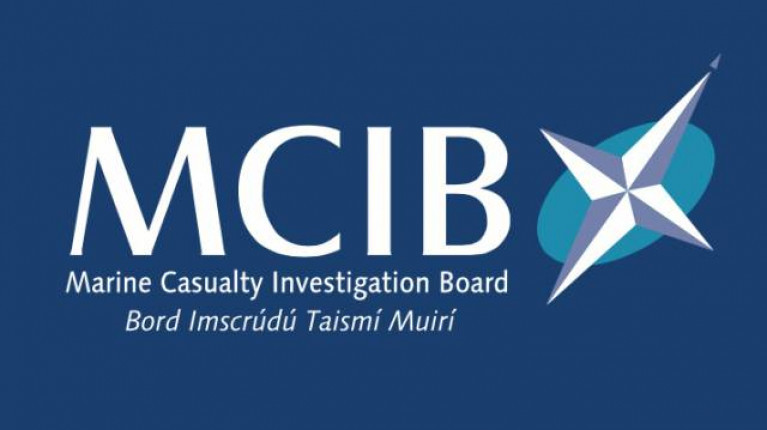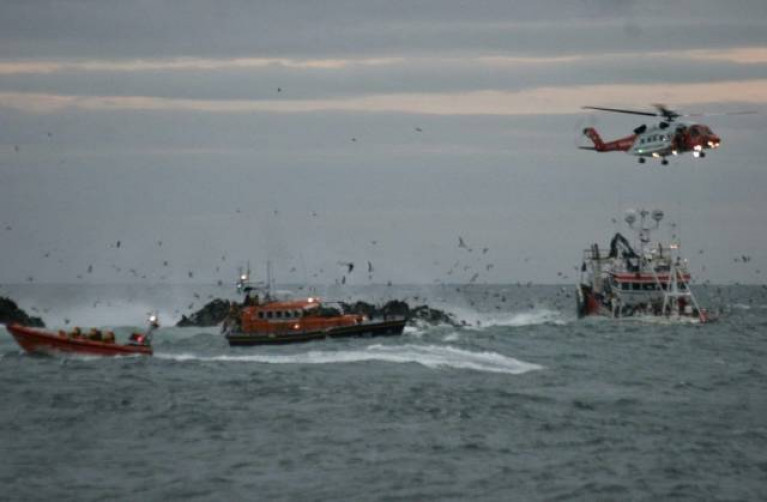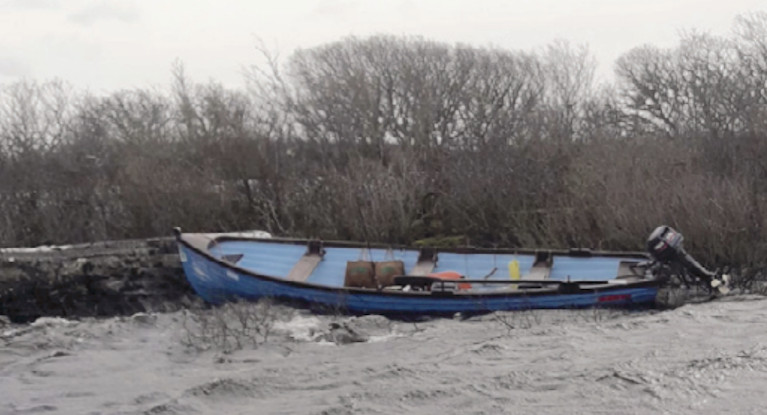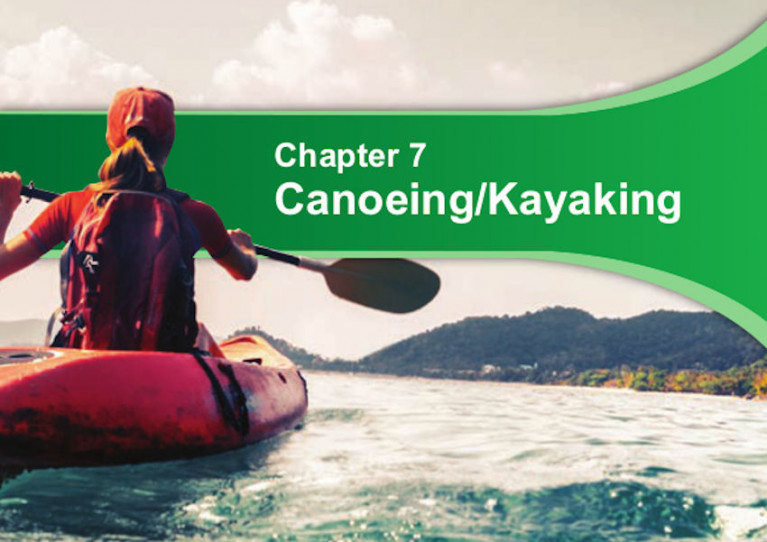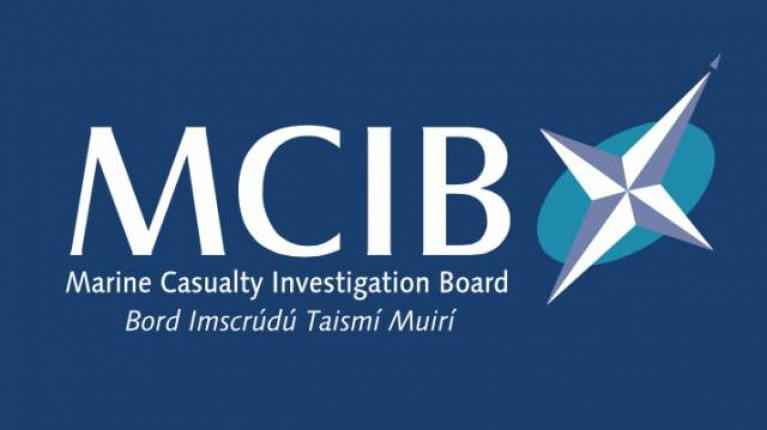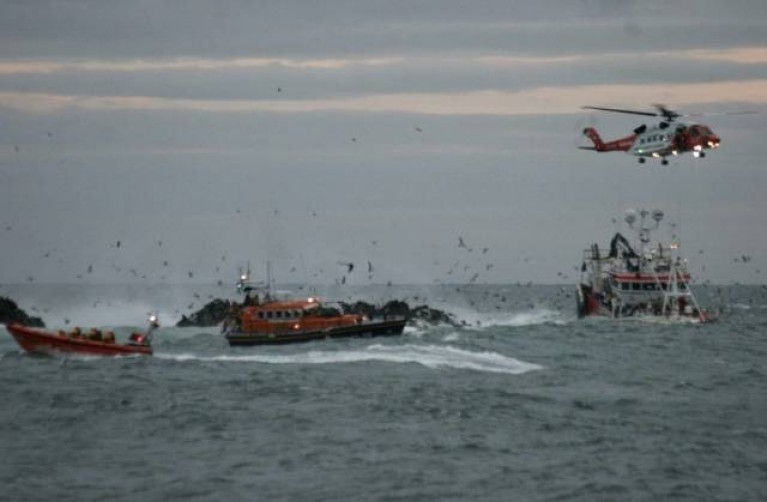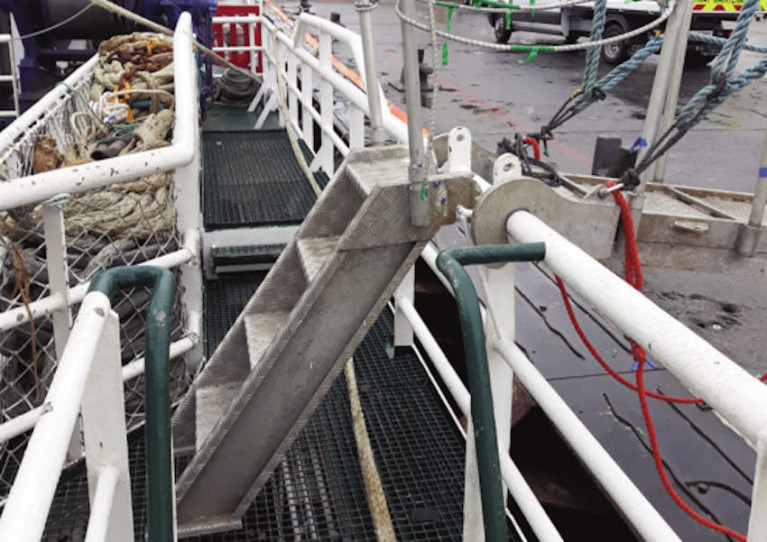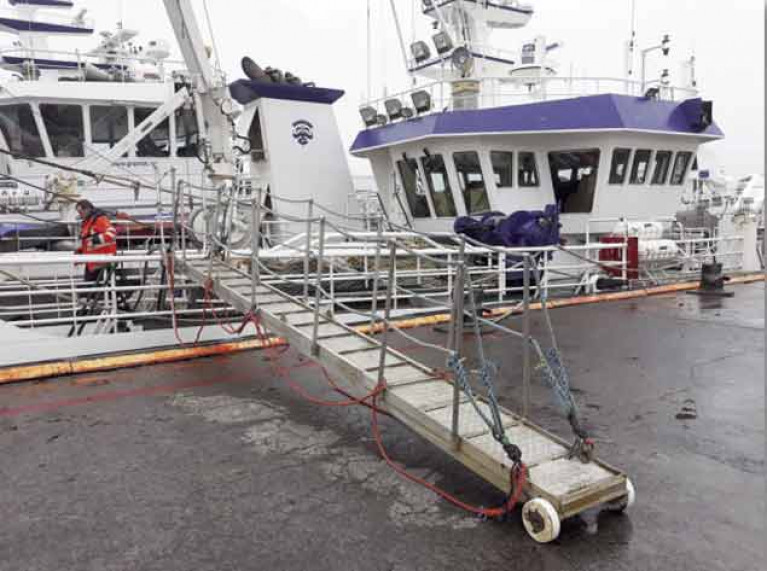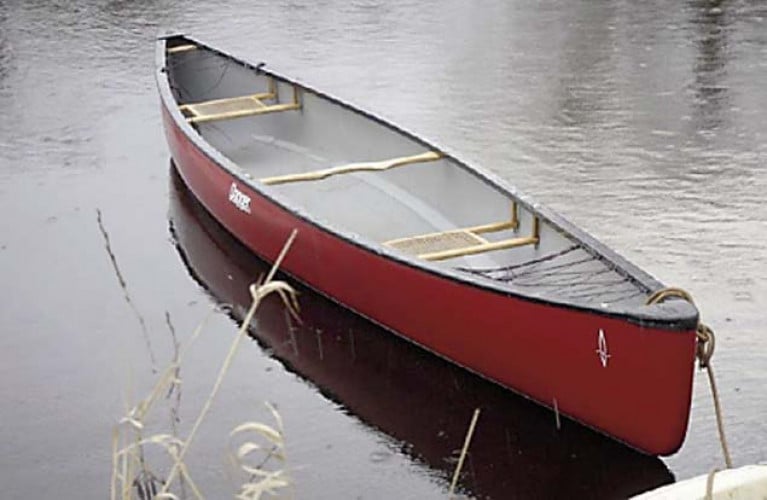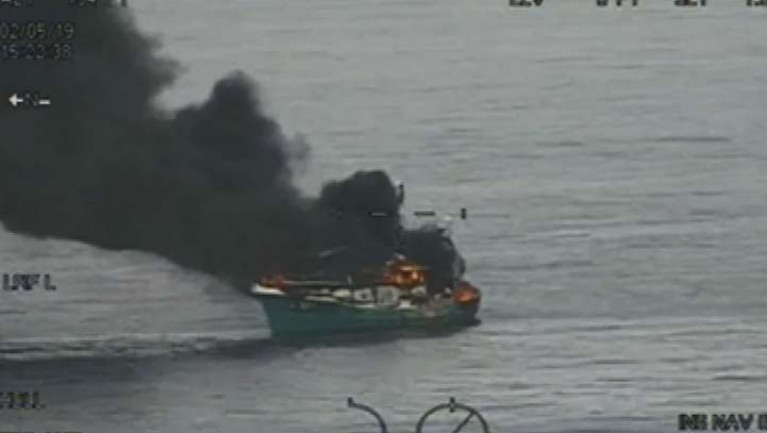Displaying items by tag: MCIB
Two Civil Servants Step Down from Marine Casualty Investigation Board
Two civil servants have stepped down from the Marine Casualty Investigation Board (MCIB), following a European Court of Justice ruling which found it lacked independence.
As The Sunday Times reports today, Ireland is not appealing the recent EU court judgment, according to the Department of Transport.
It is understood the Irish state is still liable for legal costs over its decision to challenge the European Commission’s issue with the board’s make-up.
The EU had taken issue with two of five board members being Ireland’s chief marine surveyor and the Department of Transport secretary-general’s nominee.
The EU said that the responsibilities and activities of both the transport department and Marine Survey Office (MSO) could conflict with the investigative task.
Confirming the resignations of both civil servants, the MCIB said it had been “advised that vacancies will be filled in accordance with standing Government policy after the introduction of legislation to give effect to the recent decision of the European Court of Justice”.
The Department of Transport said it has “sought legal advice on legislative and administrative options to address the court findings and the concerns of the EU Commission, and is currently examining same”.
The EU court judgment was published earlier this summer, two years after it initiated its case against Ireland over the MCIB’s lack of independence.
It found that Ireland was “not fulfilling its obligations under Article 8(1) of Directive 2009/18” governing the investigation of accidents in the maritime transport sector” .
In its defence, Ireland had argued that the MCIB reports are independent.
The MCIB is responsible under the Merchant Shipping Act and the Merchant Shipping Regulations for conducting investigations into marine casualties in Irish waters and Irish-registered vessels.
It is a non-prosecutorial body which does not enforce legislation, and its investigations do not apportion blame or fault, but recommendations have regularly been made to the Irish minister for transport.
However, almost 300 of its reports on commercial fishing and recreational casualties, and incidents involving ferries, ships and other vessels have been made public since its establishment 20 years ago.
Read The Sunday Times report here
Marine Notice Highlights Importance Of Voyage Planning For Fishing Vessels
The latest Marine Notice from Department of Transport highlights the importance of planning seagoing voyages, especially those involved in fishing.
It follows a recommendation from the Marine Casualty Investigation Board (MCIB) this summer in its report on the sinking of a West Cork fishing vessel in Ardglass, Co Down last year.
As previously reported on Afloat.ie, the Dillon Owen was entering Ardglass harbour to land its catch and refuel on 23 October last when it grounded, lost power and then drifted onto rocks.
All five crew on board were uninjured and airlifted to safety, but the vessel could not be towed off the rocks at Phennick Point and sank over the following days.
The MCIB report noted that the crew lost valuable time to drop their primary anchor — which would likely have avoided the drift into the rocks in the shallow harbour — by instead focusing on attempts to release the trawl doors.
Also suggested in the report was a call on the Minister for Transport to issue a Marine Notice for fishing vessel owners and operators to develop contingency plans and drills for such incidents.
Full details are available in Marine Notice No 41 of 2020, a PDF of which is available to download below.
PFD Not Worn by Angler who Drowned in Lough Mask - MCIB Report
An angler who drowned in Lough Mask in Co Mayo over a year ago was not wearing a lifejacket, the Marine Casualty Investigation Board (MCIB) has found.
A report by the MCIB published yesterday (Tues, September 1) has been unable to establish the cause of the incident in which a 78-year old experienced angler drowned in March 2019.
However, it says that the fact that the man’s boat was found in an upright position would suggest that he fell overboard and was unable to get back into the vessel.
The man, who lived locally near Lough Mask, left Cushlough slip near Ballinrobe at approximately 12.30 on March 8th, 2019.
Weather conditions deteriorated during the day from westerly force four to force six, with wind gusts of force seven.
The alarm was raised at 7.23 pm after the man failed to return at 6 pm and his mobile phone was off.
A local person travelled to his house to see if he had returned home and then contacted the gardai at Ballinrobe.
An air and coast search by the Irish Coast Guard Rescue 118 helicopter and Corrib Mask Search and Rescue found nothing, but the vessel was located the following day on the eastern shore of Lough Mask, about 1.5 nautical miles north of Cushlough slip.
The vessel was reported to be in “good order”, according to the MCIB report, with the outboard engine in the lifted position and the port side oar in the shipped position.
The report says the vessel’s starboard side oar was subsequently found in the water nearby, along with the angler’s cap.
A personal flotation device (PFD), fishing gear, supplies and rod were in the stowed position in the vessel.
 A PFD stowed in the forward part of the lake boat under the gunwale Photo: MCIB
A PFD stowed in the forward part of the lake boat under the gunwale Photo: MCIB
The search was hampered by prolonged bad weather periods. The man’s body was located on March 30th near where the vessel had been found. He was not wearing a PFD.
“The casualty was considered locally to be an experienced angler,” the report says, and “had been angling on Lough Mask for many years, and had entered numerous fishing competitions”.
However, it says that “even an experienced angler would have found the conditions challenging”.
An inquest on November 28th, 2019, recorded the cause of death as asphyxia due to drowning.
The MCIB report notes that Lough Mask has “no navigation marks to warn water users of danger”, and “with water levels at the time of the year when the incident occurred, awareness of hazards below the water would be all the more difficult”.
Water temperature at the time of the incident was 8°C, and the report notes that cold water shock is a factor in water temperatures below 15°C.
“This, combined with the casualty not wearing a PFD, would have considerably reduced his chances of survival”, it states.
The MCIB recommends that the Minister for Transport, Tourism and Sport issue a marine notice, reminding mariners of their obligations to comply with the “Code of Practice for the Safe Operation of Recreational Craft”.
It says special emphasis should be placed on the need to be aware of the current forecast for the area; the requirement to wear a PFD, and the need for a boarding ladder, or “other effective means of quickly re-boarding a vessel”.
It says “clubs should be requested to bring this notice to the attention of their members”.
Canoeists & Kayakers Encouraged To Review Code Of Practice
Canoeists, kayakers and relevant organisations are encouraged to review the Code of Practice for the Safe Operation of Recreational Craft, following a recent report into the death of a kayaker on Lough Gill.
As previously reported on Afloat.ie, the lone kayaker was believed to have become separated from his Canadian canoe in bad weather on the Co Sligo lough in late January 2019.
The vessel had not grablines to aid recovery after the casualty had entered the water, the MCIB report said, adding that he may have been weighed down by his Wellington boots, and had only a mobile phone and no other means of signalling for help.
The report recommended a Marine Notice highlighting the requirements for kayaks and canoes as set out in Chapter 7 of the Code, and in particular the following:
- Chapter 7, Section 7.1 (Training), page 84 of the Code: Undertake a recognised training course in the correct use of the specific type of canoe you wish to use.
- Chapter 7, Section 7.2 (Prior to entering the water), pages 84 and 85 of the Code: Ensure that you carry a mobile phone or Marine VHF radio in a suitable watertight cover for use to summon assistance in emergency situations.
- Check the hull is fitted with grab loops/towing lines.
- Ensure that you are a competent swimmer and capable of surviving in the areas you operate.
The MCIB also recommends that canoeists and kayakers should ensure that they wear clothing and footwear that will not affect their chance of survival in the water.
In addition, Chapter 7 of the Code of Practice contains general information on personal safety equipment, sea kayaking, river kayaking and canoeing.
Part A of the Code outlines the legislative requirements that apply to all recreational craft or specific types or size of craft, and Part B contains recommended guidelines and best practice for the safe operation of a range of recreational craft including canoes and kayaks.
The Code of Practice is a free document and hard copies can be obtained on request, in both English and Irish, from the Maritime Safety Policy Division at
[email protected]
The Code and individual chapters of the Code are available to view or download from dttas.gov.ie and a list of updates to the 2017 edition of the Code is also available.
Marine Notice No 30 of 2020 is available to download below, as is Chapter 7 of the Code of Practice.
Independence of Marine Casualty Investigation Board 'Not Guaranteed', European Court of Justice Rules
The European Court of Justice has ruled the State’s marine incident investigating body is not independent due to the presence of two civil servants on its board.
In a judgment issued late last week, the European Court of Justice (ECJ) said the Marine Casualty Investigation Board’s (MCIB) independence is “not guaranteed” and has awarded costs against Ireland.
Its ruling takes issue with the fact that the five-person MCIB board includes the Department of Transport secretary-general, or his or her deputy, and the Marine Survey Office (MSO) chief surveyor.
The ECJ ruling says that “in view of the functions performed simultaneously” by the two civil servants, Ireland is not fulfilling its obligations under Article 8(1) of Directive 2009/18” governing the investigation of accidents in the maritime transport sector” .
International maritime lawyer Michael Kingston has called for an “immediate public inquiry” into all investigations by the MCIB.
Mr Kingston, whose father Tim died in the Whiddy island Betelgeuse explosion 41 years ago, has already called for a “root and branch review” of the Department of Transport’s maritime safety directorate.
The Department of Climate Action, Communications and Transport said it is “examining the judgment in the case and is seeking legal advice to address the Court findings and the concerns of the EU Commission”.
The MCIB is responsible under the Merchant Shipping Act and the Merchant Shipping Regulations for conducting safety investigations and for drawing up reports and recommendations.
It is a non-prosecutorial body which does not enforce legislation, and its investigations do not apportion blame or fault.
However, its reports are made public, with recommendations to the Minister for Transport.
It has issued almost 300 reports since its establishment almost 20 years ago on commercial fishing and recreational casualties, and incidents involving ferries, merchant shipping and other vessels.
It published both an interim and final report into the death of Irish Coast Guard volunteer Caitriona Lucas off the Co Clare coast in September, 2016.
In taking the case against Ireland, the European Commission said the MCIB was not independent, on the basis that the responsibilities and activities of both the Department of Transport and the MSO could conflict with the investigative task.
The MSO holds administrative and enforcement functions in relation to ships and fishing vessels, related equipment, and the competence of mariners.
In its defence, Ireland argued that the MCIB reports are independent.
Ireland’s decision to defend the MCIB board’s composition had cost the taxpayer “substantial legal fees”, Mr Kingston said.
Mr Kingston says he has commissioned a formal report by Capt Neil Forde of Marine Hazard Ltd to carry out a review of the investigations, reports and recommendations of the MCIB.
Earlier this year, he made a submission to Garda headquarters seeking a Garda inquiry into the State's role in investigating marine accidents. He was accompanied by Independent TD Mattie McGrath and Anne Marie O’Brien, whose brother John O’Brien and his friend Patrick Esmonde drowned in 2010 off Helvick Head, Co Wexford.
Mr Kingston, who has worked as a consultant to the International Maritime Organisation, also claims that the State had been alerted to malfunctioning of emergency position indicating radio beacons (EPIRBs) before the deaths of Paul (49), Kenny (47) and Shane (44) Bolger from Passage East, Co Waterford in Tramore Bay in June 2013.
All three brothers had been wearing lifejackets when their punt capsized. Their emergency position indicating radio beacon (EPIRB) signals alerting rescue agencies to their location were not picked up.
The year after the incident, the manufacturer issued a product recall for EPIRBs manufactured between January 2005 and February 2008.
The Department of Transport subsequently confirmed that in 2010 it had contacted the manufacturer over false alerts and battery failures.
West Cork Vessel's Sinking in Co Down Identifies Need for Navigation Planning & Exercise Drills, Report States
The need for formal navigation planning has been highlighted in a Marine Casualty Investigation Board (MCIB) report on the sinking of a West Cork fishing vessel in Ardglass harbour, Co Down last year.
The report on the sinking of the FV Dillon Owen has also highlighted the need for emergency exercise drills to prepare for groundings and collisions.
The 23-metre pelagic vessel registered in Skibbereen, Co Cork, was entering Ardglass harbour to land herring and sprat and refuel in the early hours of October 23rd, 2019 when it lost power and drifted onto rocks at Phennick point.
As Afloat reported at the time, all five crew on board were uninjured and airlifted to safety, and there were unsuccessful attempts by RNLI lifeboats to tow the vessel off the rocks.
The vessel sank over the following days, and the wreck was recovered and sent for demolition. The MCIB report says there was no pollution of the environment.
The report says three distinct events occurred: the initial grounding; the loss of power; and finally the second grounding and sinking of the vessel.
It says the second grounding was caused by the failure of the crew to deploy the primary anchor as the prevailing wind sea direction drove the powerless vessel towards the north shoreline and Phennick Point.
It says the “depth of water here was shallow enough to drop an anchor in order to stop the vessel’s drift”.
“By first focusing on attempts to release the trawl doors the crew lost valuable time,”it notes.
The report cites the “Recommended Practice for Anchor and Mooring Equipment”, which states that “the use of otter boards/trawl doors should only be used if the vessel has lost its anchors”.
“The Dillon Owen had not lost its anchors, and timely release by the crew of the vessel’s primary anchor at this time would likely have averted the vessel’s second grounding at Phennick Point,” it says.
The report says the Minister for Transport, Tourism and Sport should issue a marine notice to remind vessel owners and operators to ensure all navigation is planned in adequate detail and with contingency plans, where appropriate.
It also calls on the minister to issue a marine notice “stating that fishing vessel owners and operators develop contingency plans and procedures and conduct emergency exercise drills to prepare for a grounding event or collision incident”.
It says that “where owners and operators of fishing vessels have an anchoring arrangement whereby chain cables are replaced by trawl warps”, crews should “ready anchors for deployment when entering or leaving port by connecting the trawl warp to the free end of the primary anchor chain”.
The latest Marine Notice from the Department of Transport, Tourism and Sport reminds fishing crews of the dangers associated with boarding and transiting across vessels, especially under the influence of alcohol.
The move is in response to recent reports from the Marine Casualty Investigation Board (MCIB), which found that alcohol was a factor in two unrelated incidents in Killybegs, Co Donegal in March 2019 and Rosslare, Co Wexford in May 2019, as reported by Lorna Siggins on Afloat.ie last month.
The notice also reminds of the duty of care on the part of owners and skippers “to provide a safe means of access to vessels while in the harbour and that a gangway or other suitable means, providing an appropriate and safe means of boarding a vessel, shall be made available”.
In addition, all those accessing vessels or working on exposed decks “whether at sea, in harbour or combing two and from moorings” must wear a personal flotation device, or PFD, which “will increase your chance of survival in the event of entering the water”.
The department highlights the risks associated with the consumption of alcohol and/or drug consumption and the dangers associated with boarding and transiting across vessels.
“It is evident from the recent MCIB reports that alcohol consumption continues to be a significant factor in marine incidents,” it says.
“A number of incidents have occurred where diminished human performance due to the effects of alcohol consumption have been primary causes or contributing factors, leading to the loss of life in some cases.
“Alcohol speeds up the rate of body cooling and thus increases the risk of hypothermia in the event that you fall into the water.”
Marine Notice No 25 of 2020 is available to download below.
Two Separate Marine Investigations Warn of Risks of Boarding Fishing Vessels Under the Influence of Alcohol
The Minister for Transport has been urged to remind fishing crews of the dangers involved in boarding vessels under the influence of alcohol, following reports issued this week of two separate fatalities in ports.
The Marine Casualty Investigation Board (MCIB) found alcohol was a factor in the two unrelated incidents which occurred in Killybegs, Co Donegal in March 2019 and Rosslare, Co Wexford in May 2019.
In the Killybegs incident, a crewman from 50-metre Cork vessel MFV Menhaden died after he fell while crossing vessels in the port in the early hours of March 14th,2019.
Weather conditions were poor at the time with a lot of movement between vessels, the report says.
His vessel was in the Donegal port due to adverse weather and was one of three tied up alongside each other near the auction hall, including the Sligo-registered MFV Olgarry and Norwegian MFV Grip Transporter.
The report says there was a gangway rigged between the MFV Olgarry and the MV Grip Transporter, but there are no images on CCTV footage of this gangway being used by the casualty.
The alarm was raised after he was reported missing and a Killybegs Coast Guard team recovered his body on the shore on the east side of the harbour.
A post mortem report indicated death due to drowning at sea and the accompanying toxicology report indicated high levels of alcohol in the casualty’s system.
MFV Ellie Adhamh
In May 2019, a crewman onboard the 22-metre fishing vessel MFV Ellie Adhamh drowned after he fell between the deck and the quay wall in the early hours of the morning.
The vessel was in Rosslare Europort for a marine survey and had landed fish after its arrival on May 17th.
The MCIB says the toxicological analysis report from the post mortem confirms the casualty was under the influence of alcohol and “would have been a danger to himself and others in the port area at the time of the incident”.
“ As per the report on an incident at Killybegs on March 14th, 2019 this again highlights the dangers involved when attempting to board fishing vessels when under the influence of alcohol,” the MCIB says.
It recommends the Minister for Transport should issue a marine notice reminding fishing vessel crews of the dangers associated with boarding vessels under the influence of alcohol.
It also recommends that the minister issue a notice reminding fishing vessel owners and skippers of the duty of care to provide safe means of access to vessels while in harbour, and of the importance of wearing personal flotation devices while boarding or crossing vessels.
The MCIB also says that Rosslare Europort should “consider reviewing its operating procedures including bye-laws and security plans regarding fishing vessel operations in the port”.
“This should include movement of crewmembers within the port limits and ensuring the perimeter is secure at night and also a suitable location for the berthing of fishing vessels,” it says.
Kayaker Who Died on Lough Gill Had Been Separated from Canadian Canoe in Bad Weather, MCIB Report Finds
A lone kayaker who died on Sligo’s Lough Gill last year may have become separated from his Canadian canoe in bad weather, an investigation has found.
A Marine Casualty Investigation Board (MCIB) report into the incident on January 29th, 2019, has found that wellington boots worn by the kayaker would have weighed him down on immersion.
The incident is believed to have occurred sometime between 18.27 hours on January 26th and the next evening, January 27th, before darkness fell.
The man had set out from a pier in Trawane Bay opposite Inishfree on the southwestern corner of Lough Gill and planned to camp overnight near Slish woods.
His body was found by Sligo-based Irish Coast Guard helicopter about 0.75 km from his campsite on the morning of January 29th, after the alarm was raised by his partner.
His canoe was found later on the shore by his partner approximately 0.4 km east of the campsite which he had established.
Weather conditions were not suitable for a small craft, and the personal flotation device (PFD) worn was designed to aid a person to stay afloat and swim to safety.
“The PFD would not keep him afloat as an inflatable life jacket would have done,” the report states.
The report says the canoe and the casualty “were found in two different locations indicating that the casualty entered the water and became separated from the canoe due to some incident”.
“There were no grab lines attached to the canoe to assist recovery,” it says.
The kayaker had a mobile phone but did not carry any other means of signalling for help, such as flares or a marine VHF handheld transceiver, the report states.
The report notes the man’s partner advised that he had bought the canoe within the past 12 months, and was inexperienced in using this type of craft or any craft on the water.
“He was, however, a competent swimmer having gained several certificates for achievements in swimming,” the report states.
An autopsy recorded cause of death as freshwater drowning.
The MCIB report recommends that a marine notice should be issued, highlighting the requirements set out in Chapter 7 of the Code of Practice for Recreational Craft for canoeing/kayaking.
It says particular attention should be paid to the code’s section 7.1 on training, 7.2 on carrying a mobile phone or marine VHF radio in a suitable watertight cover, and that the hull is fitted with grab loops/towing lines, and that the person is a competent swimmer.
It also recommends that canoeists/kayakers should “ensure that they wear clothing and footwear that will not affect their chance of survival in the water”.
Three Fishing Crew Saved by EPIRB After Fire Alarm Fails to Work
An investigation into a fire and sinking of a fishing vessel in the Irish Sea last year has found that its fire detection system failed to work, even though it had been surveyed only ten months beforehand writes Lorna Siggins
Three crew on board the MFV Suzanne II had a fortunate escape, as their emergency position indicating radio beacon (EPIRB) activated, and gave their latitude and longitude.
The Marine Casualty Investigation Board (MCIB) inquiry records that the three crew had set out from Arklow, Co Wicklow, in the early hours of May 2nd last year, and were working about 30 nautical miles east of the fishing port.
Weather conditions were good, and the three had taken a break when one of the crew noticed smoke coming from the engine room.
The 17-metre French-built timber vessel with aluminium shelter deck was built as a trawler but fitted with a pot hauler in 2018. The vessel had been surveyed and certified for fishing in July 2018.
The inquiry states that the skipper went to investigate the source of the smoke and “soon realised that there was a serious fire in the engine room”.
“He made an attempt to fight the fire but the level of smoke hampered any effort. The smoke and fire very quickly engulfed the vessel’s accommodation and wheelhouse,” it states.
“ The crew retrieved the vessel’s EPIRB and abandoned ship to an inflatable life raft,” it states.
Activation of the EPIRB alerted the Marine Rescue Co-ordination Centre in Dublin at 14.21 hours, as the skipper had tried unsuccessfully to seek assistance via VHF radio.
The liferaft was spotted by an angling boat named the Highlander en route from Wales to Ireland, and two of the fishing crew were transferred to the RNLI Arklow lifeboat.
The skipper, suffering from smoke inhalation, was airlifted to hospital in Waterford by the Irish Coast Guard Rescue 117 helicopter.
The MCIB says this was “a very serious marine casualty resulting in a major fire, an abandoned ship and the subsequent sinking..."
A tug boat with fire-fighting capabilities tried to extinguish the blaze, but the Suzanne II sank within three hours.
RNLI Arklow lifeboat coxswain Ned Dillon praised the crew at the time for their rapid actions.
The MCIB says that the fire detection system failed to work, and had been tested as part of a survey in July 2018. There was no record of its most recent test as the vessel’s logbooks were lost in the sinking.
Under existing regulations, testing of fire systems should take place monthly.
The MCIB’s recommendations include requesting the Minister for Transport to issue marine notices reminding of the requirement for all crew to have basic safety training, and the requirement to ensure fire alarms are regularly tested and maintained.
It says this marine notice should include “guidance on the inspection and testing of fire detection systems onboard fishing vessels of 15-24 metres in length”.


























